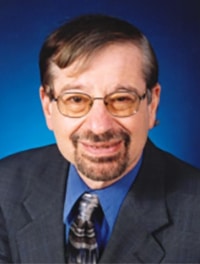Biography
Dr. Allen Katz is a professor of Electrical/Computer Engineering at The College of New Jersey. He is founder and president of Linearizer Technology, Inc., which now includes Linear Photonics, LLC and Linear Space Technology, LLC. He received his doctorate and baccalaureate degrees in electrical engineering from New Jersey Institute of Technology and a master’s degree in electrical engineering from Rutgers University. Dr. Katz holds 17 patents and has written more than 100 technical publications. He received the IEEE’s Microwave Society’s (MMT-S) Application Award in 2015 for his work in linearization, the IEEE Microwave Magazine Best Paper Award in 2010 and the William Randolph Lovelace II Award for outstanding contributions to space science and technology from the American Astronautical Society in 2002. He is also recipient of the IEEE Region 1 Technology Innovation Award in 2007. He has also served as the MTT-S Distinguished Microwave Lecturer. Dr. Katz is a Fellow of the IEEE and has served the MTT-S in a number of capacities. He is chair of the AP /ED/MTT chapter in the IEEE Princeton/Central Jersey Section and also is the Technical Program Committee co-chair for the IMS2018-Philadelphia. In addition, he has contributed to the organization of the Sarnoff Symposia and BenMAS meetings, and has organized the Trenton Computer Festival for several years in Princeton/Central Jersey.
Presentations
Minimizing Power Amplifier Memory Effects
Memory effects are changes in an amplifiers non-linear characteristics resulting from the past history of the input signal. Predistortion linearization depends on a stable non-linear response, and can be significantly degraded by memory effects. This presentation will begin with an overview of linearization techniques and the application of digital signal processing (DSP) to the correction of distortion in power amplifiers. The problems caused by memory effects will be introduced, Different sources of memory effects will be discussed and techniques for their suppression presented.
Linearization: Reducing Distortion in Power Amplifiers
Our Society’s need to exchange greater and greater amounts of information has created an unprecedented demand for highly linear power amplifiers. High linearity is required for the spectrally efficient transmission of information. This presentation will discuss techniques for the cancellation of distortion that are also known as linearization. Different methods of linearization including digital approaches will be introduced and compared. The linearization of solid-state power amplifiers, traveling wave tubes amplifiers and klystron power amplifiers will be considered. Criteria for the evaluation of linearity will be reviewed and special attention given to problems unique to SSPAs.
Linearizers 101
This talk provides various trade off involved in the decision to include linearization in the design of a microwave high power amplifier.Emphasis is placed on the use of predistortion linearization and particularly on its application with amplifiers employing travelling wave tubes (TWT) and recently available microwave GaN FET power devices. Moreover, the broadband linearizer design challenges are discussed in this talk in addition to the elements that were part of the MTT-S Distinguished Microwave Lecturer presentation of the same title.
Introduction to Linear Photonics (Sending RF/Microwave Over Fiber)
This tutorial talk will begin with an overview of analog microwave photonic link technology with an emphasis on advanced techniques for enhancing system linearity and achieving very wide bandwidths. The distinctions between analog (linear) and digital photonics will be included. A discussion of direct and external modulation techniques, receivers and link performance will be presented, along with typical performance characteristics of readily-available equipment. The requirements of key systems where fiber optics is either actively employed, or remains out of reach for technical or cost considerations will be reviewed. The use of both pre and post distortion linearization and feed forward techniques to improve system performance will be included. The contrast in performance versus requirements will be used to highlight the growth opportunities for next-generation optical links. We will conclude with a review of the activities and techniques for improving the cost and technical capabilities of microwave fiber optic links, and how the growth opportunities will be addressed.
